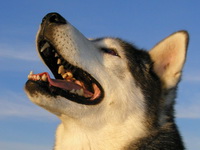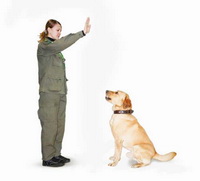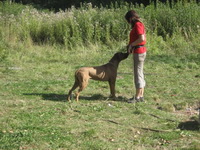daring and proud.
Team Voice
 With a young dog, you can work out the command “Voice!”. This skill is very useful when working out methods of security training (for example, when a stranger is detected in a room or shelter or as a warning signal). Practicing exercises produce as long as the dog will not give voice in a variety of situations.
With a young dog, you can work out the command “Voice!”. This skill is very useful when working out methods of security training (for example, when a stranger is detected in a room or shelter or as a warning signal). Practicing exercises produce as long as the dog will not give voice in a variety of situations.
Representatives of more temperamental breeds who are accustomed to accompanying their actions with barking (for example, German, Scottish and Belgian shepherds, Dobermans, Airedale terriers, etc.), undoubtedly, are easier to train this team than “silent” (such as rottweilers and mastiffs). Continue reading
Sit Team
 Usually the “Sit!” Team learns one of the first and becomes a small victory for a two-month-old puppy (see “Primary education of a puppy”). With the use of treats, you can work out the skill and the grown-up pet. However, the algorithm of the exercise should be more stringent. The dog is on a short leash, which the trainer holds in his left hand 20-25 cm from the collar. Continue reading
Usually the “Sit!” Team learns one of the first and becomes a small victory for a two-month-old puppy (see “Primary education of a puppy”). With the use of treats, you can work out the skill and the grown-up pet. However, the algorithm of the exercise should be more stringent. The dog is on a short leash, which the trainer holds in his left hand 20-25 cm from the collar. Continue reading
Team Ko me
 The team “To me!” From childhood should be associated with the dog only with pleasant sensations. Often, animals avoid performing this command, having even a single negative experience of approaching the owner. The little walking dogs who know that the approach to the owner on the “Ko Me!” Command is the same is a guarantee of the loss of freedom. Continue reading
The team “To me!” From childhood should be associated with the dog only with pleasant sensations. Often, animals avoid performing this command, having even a single negative experience of approaching the owner. The little walking dogs who know that the approach to the owner on the “Ko Me!” Command is the same is a guarantee of the loss of freedom. Continue reading



